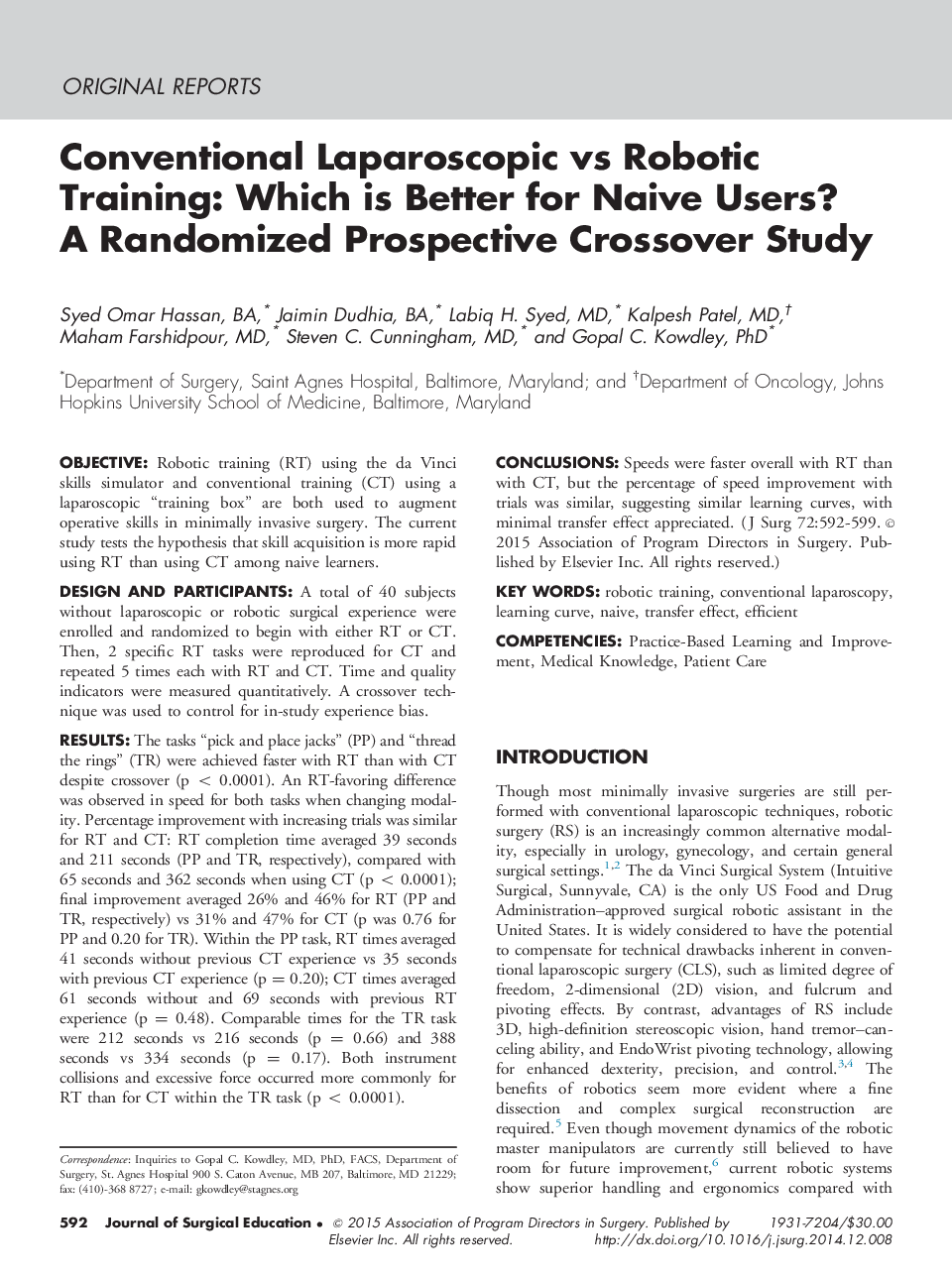| Article ID | Journal | Published Year | Pages | File Type |
|---|---|---|---|---|
| 4297696 | Journal of Surgical Education | 2015 | 8 Pages |
ObjectiveRobotic training (RT) using the da Vinci skills simulator and conventional training (CT) using a laparoscopic “training box” are both used to augment operative skills in minimally invasive surgery. The current study tests the hypothesis that skill acquisition is more rapid using RT than using CT among naive learners.Design and ParticipantsA total of 40 subjects without laparoscopic or robotic surgical experience were enrolled and randomized to begin with either RT or CT. Then, 2 specific RT tasks were reproduced for CT and repeated 5 times each with RT and CT. Time and quality indicators were measured quantitatively. A crossover technique was used to control for in-study experience bias.ResultsThe tasks “pick and place jacks” (PP) and “thread the rings” (TR) were achieved faster with RT than with CT despite crossover (p < 0.0001). An RT-favoring difference was observed in speed for both tasks when changing modality. Percentage improvement with increasing trials was similar for RT and CT: RT completion time averaged 39 seconds and 211 seconds (PP and TR, respectively), compared with 65 seconds and 362 seconds when using CT (p < 0.0001); final improvement averaged 26% and 46% for RT (PP and TR, respectively) vs 31% and 47% for CT (p was 0.76 for PP and 0.20 for TR). Within the PP task, RT times averaged 41 seconds without previous CT experience vs 35 seconds with previous CT experience (p = 0.20); CT times averaged 61 seconds without and 69 seconds with previous RT experience (p = 0.48). Comparable times for the TR task were 212 seconds vs 216 seconds (p = 0.66) and 388 seconds vs 334 seconds (p = 0.17). Both instrument collisions and excessive force occurred more commonly for RT than for CT within the TR task (p < 0.0001).ConclusionsSpeeds were faster overall with RT than with CT, but the percentage of speed improvement with trials was similar, suggesting similar learning curves, with minimal transfer effect appreciated.
